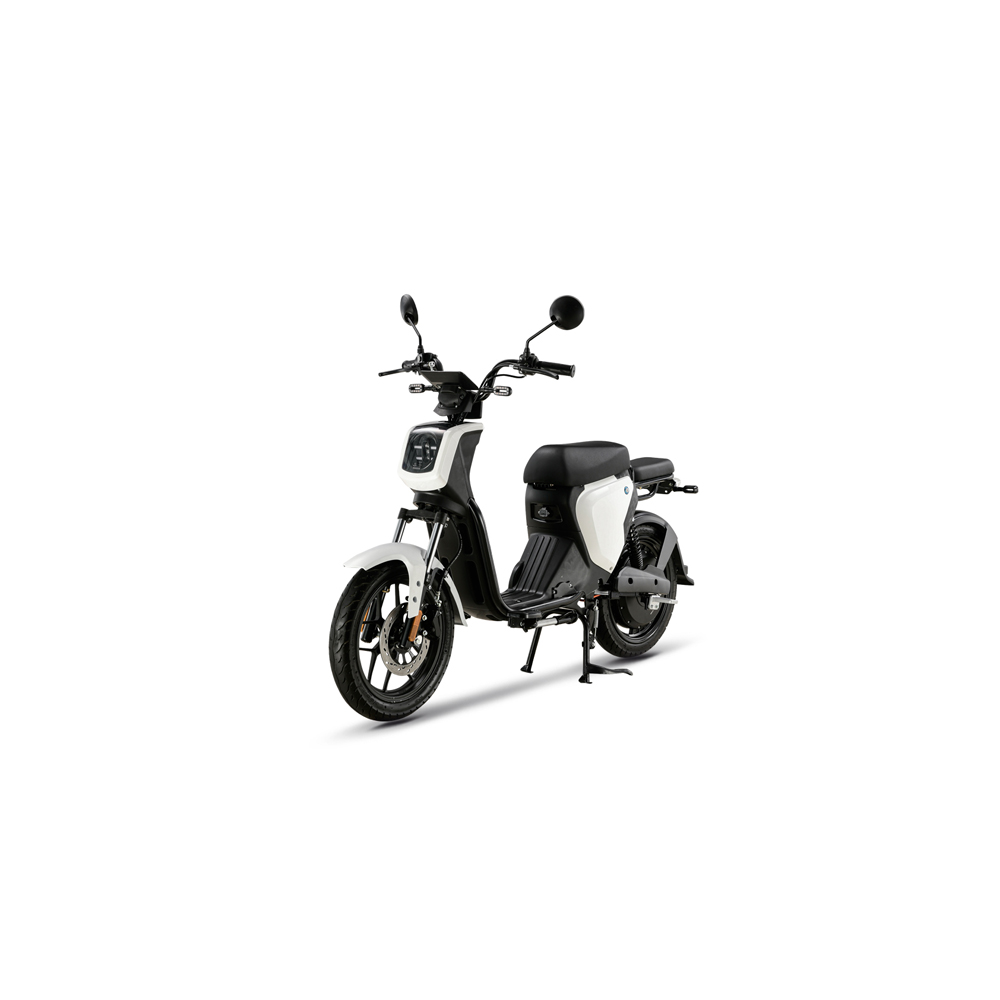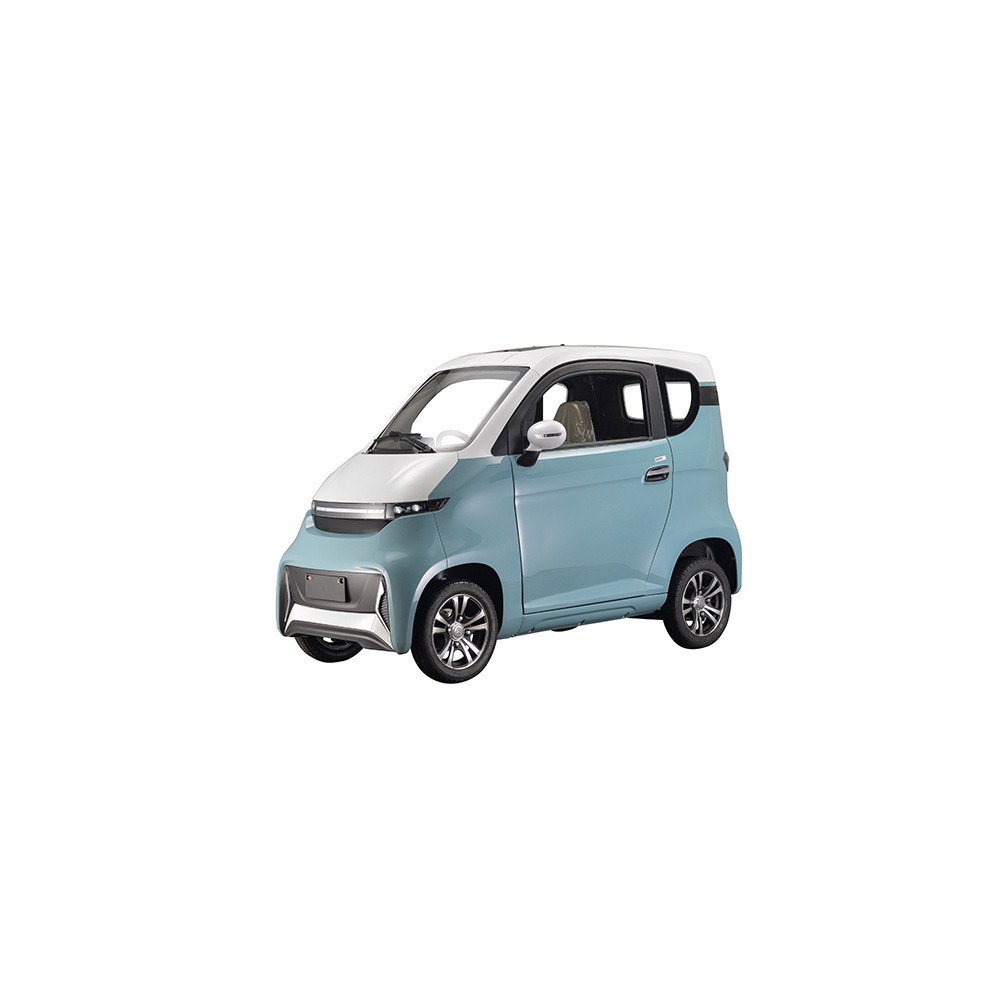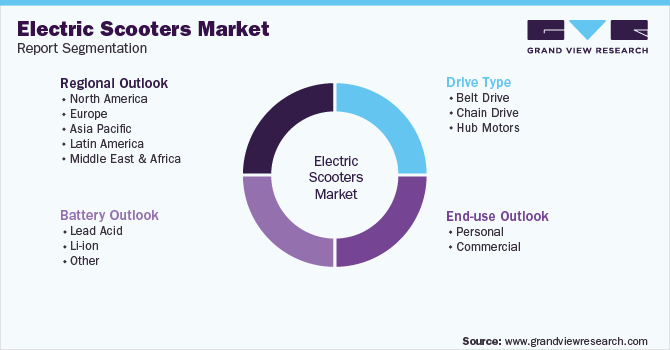

-
HOME
-
PRODUCTS
- two wheel
- three wheel
- four wheel



-
SERVICE
-
ABOUTUS
-
NEWS
-
CONTACT


-
HOME
-
PRODUCTS
-
two wheel

-
three wheel

-
four wheel

-
two wheel
-
SERVICE
-
ABOUTUS
-
NEWS
-
CONTACT
Electric Scooters Market Size, Share & Trends Analysis Report
The global electric scooter market was estimated at USD 33.18 billion in 2022 and is projected to register a compound annual growth rate (CAGR) of 9.9% from 2023 to 2030. The increasing demand for fuel-efficient vehicles, coupled with growing concerns over Greenhouse Gas (GHG) and carbon emissions, is anticipated to drive the adoption of electric scooters (e-scooters) during the forecast period. Stringent emission norms by the government agencies, such as emission standards for GHG emissions by the U.S. Environmental Protection Agency (EPA) and BS-VI in India and China, are driving the market for e-scooters.
 To learn more about this report, request a free sample copy
To learn more about this report, request a free sample copy
In addition, e-scooters have high mechanical efficiency and require low maintenance over their conventional counterparts, thus they are gaining traction in the market. In addition, the inclusion of e-scooters fleet in shared mobility and vehicle-renting ecosystems is propelling the demand for industry growth. The COVID-19 crisis has resulted in a global economic slowdown. Lockdown implementations in various parts of the world to curb the spread of the virus led to supply chain disruptions and a temporary ceasing of manufacturing activities. The pandemic affected the overall automotive industry, leading to a subsequent decline in the growth of the e-scooters market during the first half of 2020.
E-scooters became particularly vulnerable due to their dependency on global sourcing for batteries' materials and components. In addition, the initial purchase cost of e-vehicles is more than their gas-powered and hybrid counterparts, which further impacted the growth of the industry in emerging economies of the world. However, post-pandemic, increasing government initiatives, such as tax rebates and policy change, have resulted in a surge in demand for e-scooters adoption. Increasing adoption of e-scooter sharing services in countries, such as Spain, the U.S., Germany, and France, has spurred the demand for battery-powered two-wheelers.
Companies, such as Razor, Lime, Bird, Jump, and Spin, offering e-scooter sharing services are procuring these vehicles mainly from manufacturers, such as Xiaomi; Gogoro, Inc.; and Ninebot-Segway. The penetration of these sharing services is witnessing a growth in adoption rate. Moreover, increasing monetary and non-monetary incentives are encouraging the adoption of battery-operated two-wheelers. In addition, the need for sustainable urban mobility and smart transportation infrastructure is driving the transition from conventional to electric modes of transport. The participation of vehicle manufacturers and governments in meeting the standards for zero emissions will significantly contribute to reducing the carbon emission gap by 2030.
Furthermore, the issue of battery charging e-scooters is mitigated with increasing interest in building renewable energy stations and the adoption of updated technologies, such as vehicle-to-grid technologies, smart charging, etc. Moreover, governments across the globe have formulated several policies to increase the penetration of e-scooters in the industry. The government is offering various benefits to consumers as well as manufacturers in the form of subsidies.
For instance, in the U.S., the Corporate Average Fuel Economy (CAFÉ) standards are increasing the adoption of energy-efficient automobiles by framing regulations for enhancing the utilization of alternative fuel vehicles and the reduction of fossil fuel consumption. Similarly, the Canadian government is developing a strategy to reduce the country’s GHG emissions and increase the number of zero-emission vehicles. Moreover, the rapid adoption of scooter-sharing services has triggered the demand for battery-powered two-wheelers. This, in turn, creates a highly conducive environment for industry growth.
End-use Insights
On the basis of end-uses, the industry has been further classified into personal use and commercial use. The personal use segment dominated the industry in 2022 and accounted for the largest share of more than 68.85% of the overall revenue. E-scooter is changing the landscape of personal vehicles, as these vehicles are eco-friendly, affordable, lightweight, low maintenance, and easily maneuverable. They are widely preferred over other electric counterparts. In addition, e-scooters are popular among millennials and low- and middle-income groups. Many manufacturers are integrating connected vehicle technology in these scooters to provide an initiative driving experience.
The rising focus of e-scooter manufacturers on the development of private charging stations or designated spots to charge vehicles will also boost e-scooter adoption. The commercial segment is expected to record the fastest CAGR over the forecast period. E-scooters are an economical and viable option for last-mile delivery for commercial applications. In places, such as factories, universities, warehouses, and industrial sites construction with large land areas, e-scooters may be an option for efficient and fast transportation. As the trend of shared mobility is gaining traction, many vehicles renting facilities are adopting e-scooters that can be used per mixture or time duration packages for long-distance commutes, thus contributing to the segment growth.
Battery Insights
On the basis of battery types, the global industry has been further segmented into Lithium-Ion (Li-ion), lead acid, and others. The lithium-ion battery segment dominated the global industry in 2022. The segment is estimated to expand further at the fastest growth rate of more than 11.25% maintaining its leading position throughout the forecast period. The price of Li-ion batteries is expected to witness a declining trend over the coming years, with the price expected to fall more than 70% by 2030. Hence, this is expected to decrease the costs of e-scooters as well.
More environmentally conducive batteries and the growing need for high-performance batteries, such as Li-ion and NiMH, are driving the demand for battery-operated e-scooters. Some of the benefits offered by these batteries are high charging-discharging efficiency, high charge density, and low weight. The lead acid battery segment also accounted for a steady revenue share in 2022. The factors, such as lesser tolerance to abuse, bulker size, and rapid discharge, even without handling the heavy load, reduce the adoption of lead-acid batteries.
Drive Type Insights
On the basis of drive types, the industry has been further categorized into belt drive, chain drive, and hub motors. The hub drive motor type segment held the dominant share of more than 80.00% of the overall revenue in 2022. Hub drive offers efficient power transmission, quitter operations, and low repair & maintenance over its counterparts. This is encouraging prominent players, such as Yadea Technology Group Co. Ltd., NIU International, and Yamaha Motor Corp., to offer a range of hub drive e-scooters.
 To learn more about this report, request a free sample copy
To learn more about this report, request a free sample copy
The belt drive type segment is expected to witness the fastest growth rate during the forecast period. The segment growth can be attributed to its advantages, such as low maintenance, longevity, and lighter weight. Belt drive e-scooters offer better performance, enhanced pickup, infinite gear ratios, and protect the vehicle from overloading and slips. Thus, belt-drive scooters are expected to experience higher implementation adoption.
Regional Insights
Asia Pacific dominated the global industry in 2022 and accounted for the largest share of more than 74.85% of the overall revenue. Most e-scooter manufacturers have emerged from China, Taiwan, and Japan acquiring the largest share worldwide. China has emerged not only as a leading consumer of e-scooters but also as a leading producer and exporter. Vendors active in the China market include Jiangsu Xinri Electric Vehicle Co., Ltd., Yadea, AIMA Group, Zhejiang Luyuan, and Niu International. In addition, the regional market is fueled by rapid urbanization, the increasing affordability of e-scooters, and growing awareness among consumers about clean energy transportation to curb vehicular emissions. Moreover, research and development activities will continue to give this market a significant boost over the next decade.
 To learn more about this report, request a free sample copy
To learn more about this report, request a free sample copy
Prominent Japanese companies, such as Honda, Yamaha, Suzuki, and Kawasaki, have rolled out their variants of e-scooter which is further intensifying the competition in the Asian market. The market in Europe is expected to witness a considerable CAGR during the forecast period. Growing investments in EV charging infrastructure and research support for innovative high-density batteries are anticipated to contribute to overall regional growth. Moreover, witnessing a steep growth in the entry of international e-scooter manufacturers, vendors active in the Europe region are focusing on launching multiple variants of e-scooters to attract the young population. Such strategies adopted by companies are expected to fuel market growth in the European region.
Key Companies & Market Share Insights
Companies, such as LimeandGovecs AG, are focused on launching last-mile e-scooter rental services in different countries and cities with a joint venture strategy to expand their industrial footprint. In India, prominent players are focused on research and development activities to launch a range of e-scooters. For instance, in November 2022, Simple Energy, an Indian start-up announced to launch of its e-scooter “Simple One” in March 2023. The company has rigorous R&D to enhance the quality and invest in developing its propriety motor for the new product. In Taiwan, Gogoro’s swappable battery e-scooter has revolutionized the market, and many Asian vendors are affiliating with Gogoro to integrate the swappable battery technology in their vehicles. Some of the major players in the global electric scooters market are:
-
AllCell Technologies LLC
-
BMW Motorrad International
-
BOXX Corp.
-
Gogoro, Inc.
-
Green Energy Motors Corp.
-
Greenwit Technologies Inc.
-
Honda Motor Co. Ltd.
-
Jiangsu Xinri E-Vehicle Co., Ltd.
-
KTM AG
-
Mahindra GenZe
-
Electric Scooters Market Report Scope
Report Attribute
Details
Market size value in 2023
USD 37.07 billion
Revenue forecast in 2030
USD 78.65 billion
Growth rate
CAGR of 9.9% from 2023 to 2030
Base year for estimation
2022
Historical data
2018 - 2030
Forecast period
2023 - 2030
Quantitative units
Revenue in USD million/billion, volume in thousand units, and CAGR from 2023 to 2030
Report coverage
Revenue forecast, company ranking, competitive landscape, growth factors, and trends
Segments covered
Drive type, battery, end-use, region
Regional scope
North America; Europe; Asia Pacific; Latin America; MEA
Country scope
U.S.; Canada; U.K.; Germany; France; China; Japan; India; Mexico; Brazil
Key company profiled
Mahindra GenZe; BMW Motorrad International; Vmoto Ltd.; Terra Motors Corporation; Gogoro Inc.; Jiangsu Xinri Electric Vehicle Co. Ltd.
Customization scope
Revenue forecast, company ranking, competitive landscape, growth factors, and trends
Pricing and purchase options
Avail customized purchase options to meet your exact research needs. Explore purchase options
Global Electric Scooters Market Segmentation
This report forecasts revenue growth at global, regional, and country levels and analyzes the latest industry trends in each sub-segments from 2018 to 2030. For the purpose of this study, Grand View Research has segmented the global electric scooters market report based on the drive type, battery, end-use, and region:
 To learn more about this report, request a free sample copy
To learn more about this report, request a free sample copy -
Drive Type (Revenue, USD Million, 2018 - 2030)
-
Belt Drive
-
Chain Drive
-
Hub Motors
-
-
Battery (Revenue, USD Million, 2018 - 2030)
-
Lead Acid
-
Li-ion
-
Other
-
-
End-use (Revenue, USD Million, 2018 - 2030)
-
Personal
-
Commercial
-
-
Regional Outlook (Revenue, USD Million, 2018 - 2030)
-
North America
-
U.S.
-
Canada
-
-
Europe
-
U.K.
-
Germany
-
France
-
-
Asia Pacific
-
China
-
Japan
-
India
-
-
Latin America
-
Brazil
-
Mexico
-
-
Middle East & Africa
-



 To learn more about this report,
To learn more about this report,